How Dunwoody United Methodist Church Increased Engagement and Connection
Dunwoody chose the right software system to increase engagement and connection
Church Community Builder, integrated with Pushpay, is much more member-oriented, analytical, and comprehensive in terms of setting up statistics, metrics, and attendance measures.
James Davis, Dunwoody United Methodist Church
Summary
On October 8, 1903, Dunwoody United Methodist (initially established as Dunwoody Methodist Episcopal Church, South) was first organized in a tiny Atlanta suburb one-room church. Within a month, 31 people attended services every fourth Sunday and followed the mission to put their faith in action by becoming disciples of Jesus Christ for the transformation of the world.
Since their meager beginning, DUMC has grown to be one of the largest of 800+ churches that make up the North Georgia Conference–the biggest United Methodist Conference in the United States.
Today, the multi-generational church has grown to 5,000. Ranging from young families to healthy seniors, members attend traditional and contemporary worship and programs for all ages.
However, when DUMC was faced with choosing new Church Management Software (ChMS), helpful volunteers within their church community methodically devised a four-pronged approach and six key requirements to help them determine the best solution.
Problem
In 2020, amidst the pandemic, DUMC found themselves needing to appoint a new minister. So, in July, Senior Pastor Phil Shrader arrived.
Part of Pastor Shrader’s vision for the church was to increase the percentage of DUMC’s members participating in the major activities of the church–worship, small groups, ministries, and missions. He started by personally meeting the people of DUMC through Zoom calls. He wanted to not only get to know each member of the congregation but identify people who were in leadership roles or long-time members that could give him a better grasp of how he’d achieve his vision for DUMC.
During one of his meet-ups, Pastor Shrader told a DUMC member, “We have four activities. I want metrics. I want to measure what percentage of those are currently coming to worship, ministries, missions, and small groups, and I want to increase that over the next 12 months.”
This was music to the member’s ears because they felt Pastor Shrader was asking the right questions to achieve such goals.
Pastor Shrader set the goal of meeting with 100 people in his first 100 days at DUMC. To accomplish this, Pastor Shrader would need to utilize the church’s database to reach out to congregants.
Assigning the task to a new administrative assistant, they began sifting through DUMC’s current legacy ChMS of 30 years, ACS Technologies. They quickly realized that 60-70% of the telephone numbers listed were no longer in service or connected to the right church member.
With a database of 12,000 contacts, their current ChMS required church staff to update individual contact information on a case-by-case basis., And DUMC hadn’t done much updating over the years. So the database was bare of any help to Pastor Shrader.
Getting Down to Business
When Pastor Shrader heard about the first of a few roadblocks their current ChMS was causing, he put on his Emory University’s Goizueta Business School MBA hat and went to work. Not only did the church need a system that would provide updated contact information, but also a database that would track attendance. This would help Pastor Shrader understand the percentage of people involved in the four activities that he hoped to increase within the year.
Pastor Shrader assembled a small team of volunteers with backgrounds in business, software, and database systems. Their task? Find a resolution to their ChMS problems.
Phase 1 – Diagnostics
The Research Committee interviewed DUMC clergy, department heads, and staff to assess the current state of their legacy ChMS, ACS, and what it was lacking.
They asked several questions, including:
What is your role in the church?
How do you use the current ACS membership system?
What other software do you use?
How do you use that and does it integrate with any other software?
What are the biggest problems that you have?
What do you wish existed that would help you do your job better?
What do you think we could do to have more of an impact on the church?
As the committee completed the interview process, they synthesized, prioritized, and converted the responses into requirements.
Phase 2 – Identifying Requirements
Their findings revealed the issue was not that they didn’t have enough software. In multiple cases, they had too many different software applications performing similar functions that weren’t in sync.
“From a church management standpoint, if whatever we had didn’t meet our needs, we would just go find something else,” said a Research Committee member. “And so that’s how you end up with 20 third-party software packages, none of which talk to each other.”
Their interview results and knowledge of what type of software capacity would best fit their needs helped identify what the ideal solution would require.
The committee’s belief was that good data was never going to happen if you were dependent on just church staff being able to maintain and update member information.
“For us, one of the key things that we recognized from the beginning that was most important, if nothing else works in a membership system, you need to have good data that is easy to access,” added the Research Committee member.
So ideally, they wanted a ChMS that allowed church members to maintain and update their personal information, group management that expands, engages, and connects relationships both in number and in-depth with like-minded members, a system that allowed members to view their individual giving records and annual donations, provided an online payment process, and allowed mobile, text messaging, and email integration.
5,000
Has grown to 5,000 members since it was first established 118 years ago
Pushpay
Phase 3 – Identify Potential Solutions
With these requirements top of mind, the Research Committee was able to identify five possible software solutions suggested by staff members or friends from other churches that they had used or were currently using.
Church Community Builder (CCB) was one of the five, thanks to new arrival and committee member Associate Pastor Matt Stone, who had spent seven years at a Methodist Church in Texas where he’d had a positive experience using CCB’s ChMS.
Phase 4 – Make a decision on which solution is best
For the next three months, the committee continued to do deep-dive research into the five solutions, requested demos, and compared each solution to one another.
One of the last solutions they reviewed was CCB. As Pushpay customers for the last two years, DUMC’s Research Committee found the most recent partnership between the two companies fascinating and wanted to learn more.
By mid-December, they had gone through the five solutions, checked all references and customer reviews, and selected the two they thought were the best to meet their needs–Planning Center Online and Church Community Builder.
“We reengaged with the Leadership Team after the new year and said, ‘We have these five software solutions, the shortlist is two [PCO and CCB]. Here’s the detailed information on all five and why we eliminated three of them,” a Research Committee member added.
The Leadership Team based their decision on six high priority requirements–user-maintained data, email integration, access to the workflow process, manageable payment process and records, HTML support, and mobile integration. If any of the proposed solutions was missing one of the requirements, they were eliminated.
Avoiding a drawn-out democratic process, they turned to a Selection Committee made up of DUMC’s Senior Pastor Phil Shrader, COO Roger Young, and Associate Pastor Matt Stone to make the final decision between the two solutions.
By the end of January, after two full demos of each solution, the Selection Committee, joined by the Research Committee, unanimously chose CCB.
“Of the six things, Planning Center (Online) was great in one of the requirements but CCB was better in two or three of the requirements,” said a Research Committee member.
But what stood out most, and helped make DUMC’s decision between the two solutions, was CCB’s integration.
“CCB is much more integrated, member-oriented, analytical, and comprehensive in terms of setting up statistics, metrics, and attendance measures. And what really made the difference was CCB integrated with Pushpay.”
Result
Phase 5 – Implementation
Since their final decision at the end of January, DUMC has been in communication with Pushpay to implement CCB’s ChMS to their system.
“The day after we signed the deal, we put out an email from the Senior Pastor that said, ‘We just signed a deal. We selected a software package named CCB. It’s integrated with Pushpay and that’s a plus,’” explained a Research Committee member.
With an Implementation Team and trained staff already in place, DUMC has been blessed in finding the volunteers who have become the true overall leadership of the team. But they’re also grateful for the vision Pastor Phil Shrader had to kickstart the project.
Believing in the CCB mission, DUMC feels certain their implementation will be a success, thanks to the engagement of senior and top-level staff and members. These are the people who have the drive to make things happen, and the determination to see the process through to the end.
“I hope when another church reads this, they’ll understand we had a new senior pastor who came in, did his homework in terms of what he wanted to do, and was willing to step out on a limb and make changes,” said a Research Committee member.
In the end, DUMC learned just how important it is to have a project team made up of committed volunteers, staff, and an engaged leader who knows what they’re doing. If you have that in place, anything is possible.

Community Size
Key Tools
- Church Management
Results
Has grown to 5,000 members since it was first established 118 years ago

